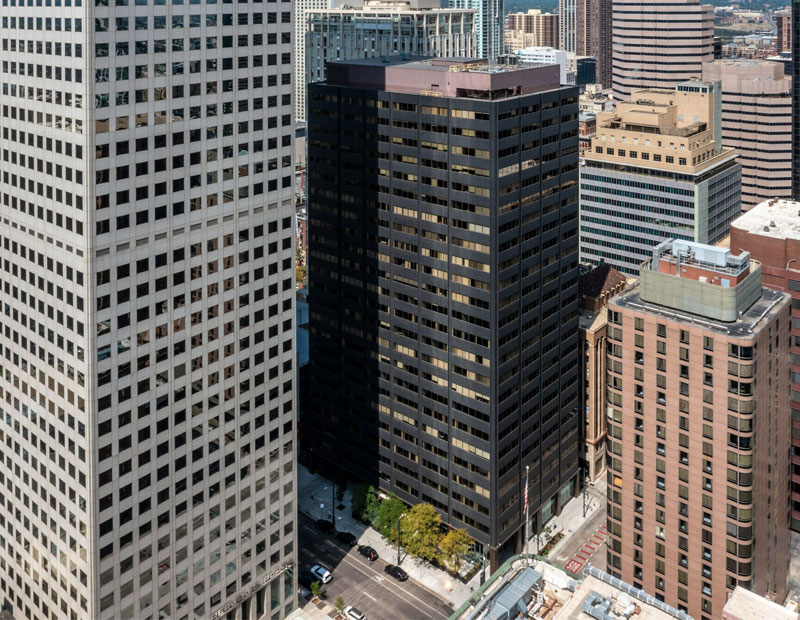Why Globalization Creates New Risks and Liabilities for Construction
Veteran attorney and construction expert Barry LePatner on what CRE owners should know about protecting against offshore uncertainties.
Architects, engineers and contractors operate in an industry filled with unpredictability. The high degree of inefficiency, decades of low worker productivity, and the enormous likelihood of projects being over budget and late on delivery from incomplete plans and specifications make this $1.5 trillion industry one where managing risk is much discussed though little performed.
Now, in the wake of the COVID-19 pandemic, with more than 30 percent of the materials, products and equipment needed for all projects still coming from overseas, owners are facing new risks, and the AEC industry faces a slew of new liabilities as the re-structuring of the global supply chain continues to impact project deliveries.
“Our supply chains are not secure,” Treasury Secretary Janet Yellen recently stated, “and they’re not resilient.”
Even more worrisome is the fact that the industry remains largely unaware of and unprepared for numerous new supply chain regulations, geo-shifting of previously established manufacturers, and new risks of changing distributors. There is a path forward. But it’s important to understand how we got here.
Rising globalism + pandemic upends supply chain
Following World War II, businesses in the U.S. and overseas saw the concept of free market capitalism as one that would spread democracy and bring enormous Western investment to underdeveloped overseas nations, lead to a relentless pursuit of lower costs to produce goods, and bring huge benefits to their shareholders. The price paid for this late 20th Century massive shift of resources to low-wage countries like China, Vietnam and India led to massive U.S. factory layoffs and unemployment that effectively destroyed the American middle class.
During the 1990s, inflation was still low while employment, wages and productivity began to pick up. Global trade nearly doubled. Cheap goods for new products and materials specified by design professionals from overseas factories in China, South Korea, Malaysia and Mexico drove prices lower. Investment in developing countries surged and corporate stock prices rose. AEC professionals found themselves able to specify and order a wide range of products that were 50 percent to 75 percent less expensive when obtained from overseas, resulting in 30 percent to 50 percent of all construction project products being sourced from other countries. The international supply chain was operating at full force until the financial crisis of 2008 and the onset of the COVID-19 pandemic in mid-2020 brought it to a cataclysmic halt.
Today, according to a recent New York Times article, “Globalization, seen in recent decades as unstoppable a force as gravity, is clearly evolving in unpredictable ways.”
The combination of high inflation impacting the U.S. economy, Russia’s ongoing war in Ukraine, and devastating climate disasters around the globe further highlighted the true fragility of the world’s supply chain of the products used in construction. Prior to that, according to Josep Borrell, the European Union’s head of foreign affairs and security policy: “Europe got cheap energy from Russia and cheap manufactured goods from China. This is a world that is no longer there.”
AEC field faces mass uncertainty
Going forward, what does this mean for AEC professionals who have regularly counted on a reliable supply chain of goods from cheap overseas sources to fill out the specification’s sections of their construction documents? How can contractors and subcontractors today contractually commit to a promised date of delivery for products specified as part of their construction obligations? And who will bear responsibility for delays and cost overruns when owners—who are facing huge interest costs on their construction loans—are forced to delay completion of their projects or required to pay healthy premiums to secure priority on the wait lists of costly domestic manufacturers?
The spreading coronavirus, diminished workforces and loss of truckdrivers contributed to massive supply chain delays at all ends. Goods delivered to the ports of Los Angeles or Long Beach, Calif., experienced massive bottlenecks in offshoring cargo from ships onto delivery trucks, making it clear that future dependence on overseas production could no longer be assured. Recently, the Port of New York and New Jersey replaced Los Angeles as the busiest port in the U.S.
Guarding against new risks and potential liabilities
Both public and private projects are at heightened risk of delays and increased costs due to improper specification of products impacted by supply chain issues. As a result, owners are increasingly dependent on their design and construction team members to pay attention to the specification of products, materials and equipment impacted by overseas uncertainties.
According to a recent report by Ernst & Young, 43 percent of large manufacturing survey respondents state that they are considering reshoring production facilities to North America.
Design professionals who prepare the product specifications and contractors who agree to purchase them for their clients’ projects must take all or some of the following steps to show they have done the minimum due diligence or face scrutiny and liability when overseas shipments fail to arrive or are delayed:
- Identify which of your current products are being manufactured overseas and directly confirm current shipping times to the U.S.
- Identify those products and materials that are manufactured from critical materials that are in great shortage due to the war in Ukraine or environmental or other legal impediments.
- Firms should diversify their sourcing, production and distribution networks for each essential category of products and materials, i.e., provide for multiple resources for key architectural, mechanical, electrical and plumbing elements of the project.
- Filter your specifications by asking which products currently have backlogs that may threaten the timeliness of on-time delivery to your project.
- Identify products or countries in which they are made that have been included in current sanctions by the U.S.; e.g., not complying with United Nations ILO Conventions that prohibit child labor or hazardous working conditions;
- Improve the likelihood of avoiding specification of products that represent project risk by developing a proprietary data base that connects data from suppliers’ customers, their upstream suppliers and exposure to countries under sanctions for various reasons. Compiling detailed supply chain data will provide your organization a complete advantage for future new projects and avoid the risk of costly supply chain surprises;
- Adopting technology to address the multiple threats facing each project’s supply chain is no longer optional but a critical necessity. Firms must explore the use of software platforms such as FRDM.com, which employs thousands of vetted media sources, reports, court records and research from vendors themselves to mitigate risk, improve supply chain transparency and identify potential risks as they are updated.
New day, new rules
The world of design specifications has taken a risk\reward turn that can no longer be ignored by AECs hoping to successfully navigate projects to a successful completion. Certainly, the continued risk of a turbulent supply chain for the materials, products and equipment ordered abroad will no longer tolerate any degree of complacency. To avoid anticipated exposure to these risks, firms will have to staff their project teams or consult with experts in this field who regularly monitor a complex host of factors underlying how those products proceed from manufacture to the project site.
Barry B. LePatner, Hon. AIA, is a nationally recognized construction counsel and author of Broken Buildings, Busted Budgets: How to Fix America’s Trillion Dollar Construction Industry, (Univ. of Chicago Press).








You must be logged in to post a comment.